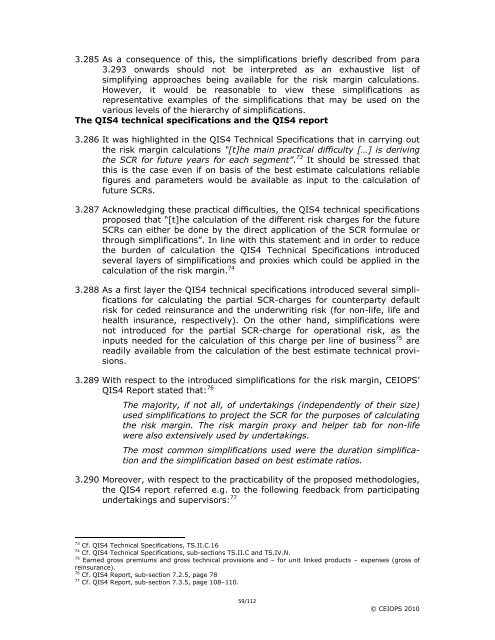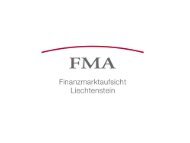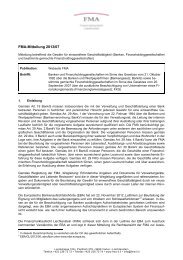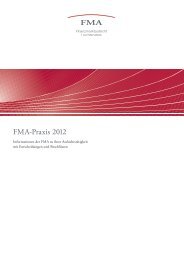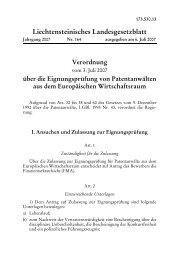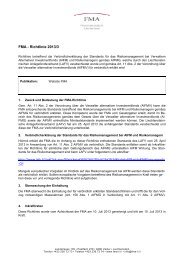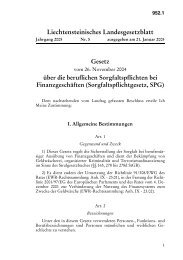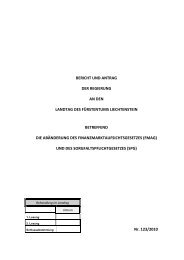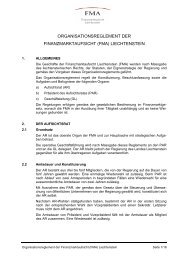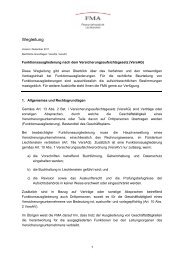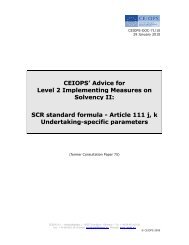CEIOPS' Advice for Level 2 Implementing ... - EIOPA - Europa
CEIOPS' Advice for Level 2 Implementing ... - EIOPA - Europa
CEIOPS' Advice for Level 2 Implementing ... - EIOPA - Europa
Create successful ePaper yourself
Turn your PDF publications into a flip-book with our unique Google optimized e-Paper software.
3.285 As a consequence of this, the simplifications briefly described from para<br />
3.293 onwards should not be interpreted as an exhaustive list of<br />
simplifying approaches being available <strong>for</strong> the risk margin calculations.<br />
However, it would be reasonable to view these simplifications as<br />
representative examples of the simplifications that may be used on the<br />
various levels of the hierarchy of simplifications.<br />
The QIS4 technical specifications and the QIS4 report<br />
3.286 It was highlighted in the QIS4 Technical Specifications that in carrying out<br />
the risk margin calculations “[t]he main practical difficulty […] is deriving<br />
the SCR <strong>for</strong> future years <strong>for</strong> each segment”. 73 It should be stressed that<br />
this is the case even if on basis of the best estimate calculations reliable<br />
figures and parameters would be available as input to the calculation of<br />
future SCRs.<br />
3.287 Acknowledging these practical difficulties, the QIS4 technical specifications<br />
proposed that “[t]he calculation of the different risk charges <strong>for</strong> the future<br />
SCRs can either be done by the direct application of the SCR <strong>for</strong>mulae or<br />
through simplifications”. In line with this statement and in order to reduce<br />
the burden of calculation the QIS4 Technical Specifications introduced<br />
several layers of simplifications and proxies which could be applied in the<br />
calculation of the risk margin. 74<br />
3.288 As a first layer the QIS4 technical specifications introduced several simplifications<br />
<strong>for</strong> calculating the partial SCR-charges <strong>for</strong> counterparty default<br />
risk <strong>for</strong> ceded reinsurance and the underwriting risk (<strong>for</strong> non-life, life and<br />
health insurance, respectively). On the other hand, simplifications were<br />
not introduced <strong>for</strong> the partial SCR-charge <strong>for</strong> operational risk, as the<br />
inputs needed <strong>for</strong> the calculation of this charge per line of business 75 are<br />
readily available from the calculation of the best estimate technical provisions.<br />
3.289 With respect to the introduced simplifications <strong>for</strong> the risk margin, CEIOPS’<br />
QIS4 Report stated that: 76<br />
The majority, if not all, of undertakings (independently of their size)<br />
used simplifications to project the SCR <strong>for</strong> the purposes of calculating<br />
the risk margin. The risk margin proxy and helper tab <strong>for</strong> non-life<br />
were also extensively used by undertakings.<br />
The most common simplifications used were the duration simplification<br />
and the simplification based on best estimate ratios.<br />
3.290 Moreover, with respect to the practicability of the proposed methodologies,<br />
the QIS4 report referred e.g. to the following feedback from participating<br />
undertakings and supervisors: 77<br />
73<br />
Cf. QIS4 Technical Specifications, TS.II.C.16<br />
74<br />
Cf. QIS4 Technical Specifications, sub-sections TS.II.C and TS.IV.N.<br />
75<br />
Earned gross premiums and gross technical provisions and – <strong>for</strong> unit linked products – expenses (gross of<br />
reinsurance).<br />
76<br />
Cf. QIS4 Report, sub-section 7.2.5, page 78<br />
77<br />
Cf. QIS4 Report, sub-section 7.3.5, page 108–110.<br />
59/112<br />
© CEIOPS 2010


